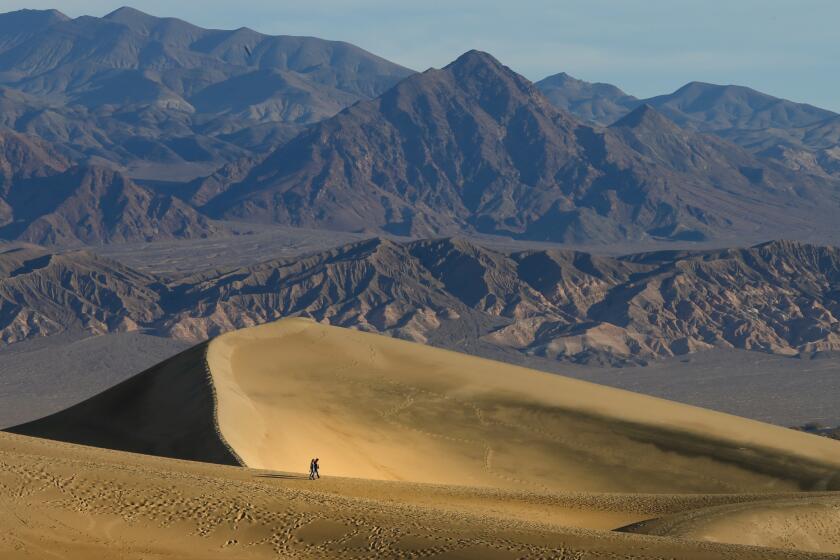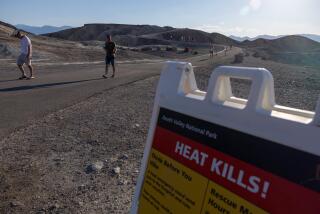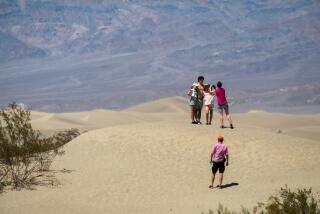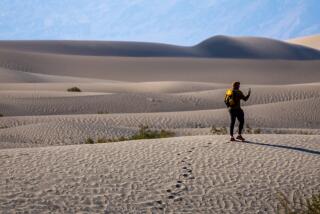Snow in Death Valley, the hottest place on Earth? It’s not what it looks like
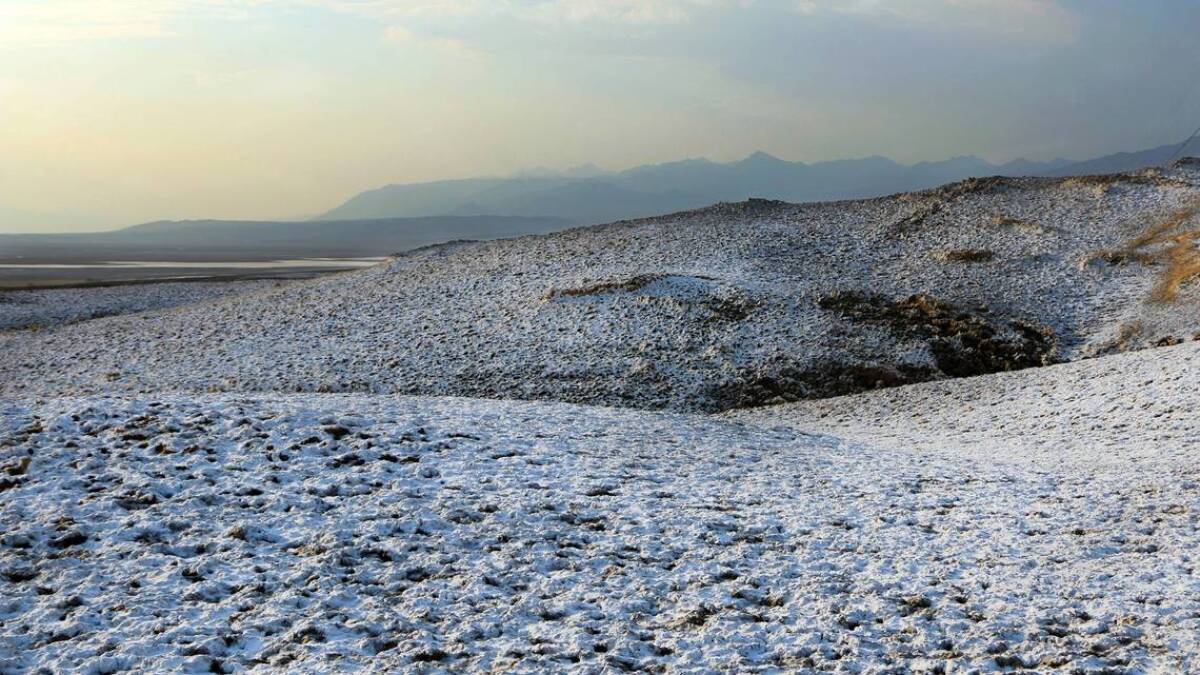
It’s a confounding image for those who know Death Valley as the hottest place on Earth.
The hills of the national park — typically scorched brown from the heat — are coated in a blanket of white in a photo posted to Facebook by the U.S. Department of the Interior.
Snow? In Death Valley?
Not at all. The winter-wonderland look depicts a phenomenon known as salt flowers, caused by recent rainfall, park officials said.
Park spokeswoman Abby Wines said the photo, which was posted on Tuesday, was snapped along low hills about a mile north of Furnace Creek, an area known for its extreme heat.
“Basically, it’s groundwater that gets drawn up to the surface, evaporates and leaves behind minerals and salt,” Wines said. “It looks freshest, it looks best, right after it rains.”
The fresh salty crust will erode over time, park rangers said on Facebook, but rain will reset the process.
Death Valley may have recorded Earth’s highest temperature in 90 years. Data show it is also be among the top three highest temperatures ever measured in Death Valley.
Although it seems unusual, Wines said it is all part of Death Valley’s regular cycle. A 16-year resident of the area, she said she has come to appreciate the park’s subtle shifts from salt to dust to erosion, much as those in other parts of the country appreciate the four seasons.
“Here in Death Valley, it’s like, “oh the hills look bright and white again,” she said. “Those are the changes that you really appreciate when you live in a place and see the variety.”
And although thunderstorms do occur in Death Valley, the park typically only receives about 2 inches of rain per year, she said.
Snow on the valley floor is even rarer: Trace amounts have been recorded only a handful of times, according to the National Weather Service.
Last year, Death Valley recorded a scorching 130 degrees, thought to be the highest temperature on Earth in nearly a century.
More to Read
Sign up for Essential California
The most important California stories and recommendations in your inbox every morning.
You may occasionally receive promotional content from the Los Angeles Times.
